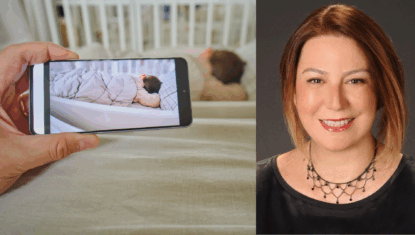04/11/2025
Ottawa, Ontario — Tuesday November 4, 2025

Kids with autism spectrum disorder (ASD) are more likely to have obstructive sleep apnea (OSA), a condition that causes breathing problems during sleep and can lead to long-term health complications. Testing for OSA is done with an overnight study in a sleep lab, which can be hard for kids with ASD because of the unfamiliar people, noises, and monitoring equipment. But what if there was an easier way?
A pilot study from Refika Ersu Nick Barrowman, Sherri Katz and Taylor Johansen evaluated at-home video clips recorded by parents on a mobile phone of their kids sleeping paired with an education program to help kids and families feel comfortable using at-home versions of wearable measurement equipment called polygraphy.
“The home videos gives us a simpler, less stressful way to spot moderate sleep apnea in kids with autism.” said Refika Ersu, Investigator at CHEO RI. “It means fewer families need to go through a full overnight sleep study, which can be really challenging for these kids.”
Kids responded very well to the education program and didn’t mind using the monitoring equipment, and researchers found that this information combined with the videos were successful in spotting moderate-to-severe OSA.
“A big part of this study was how we were able to provide training and strategies for kids and families to help them feel more comfortable using the measuring equipment” said Taylor Johansen, Director of Neurodevelopmental Health at CHEO. “When you can turn an at-home measuring tools into something else, like an astronaut’s space suit, the kids were far more likely to use them.”
This innovative approach could make screening for OSA faster and less stressful for families and kids with ASD, and larger studies will help further validate the program as an effective tool for clinicians.
